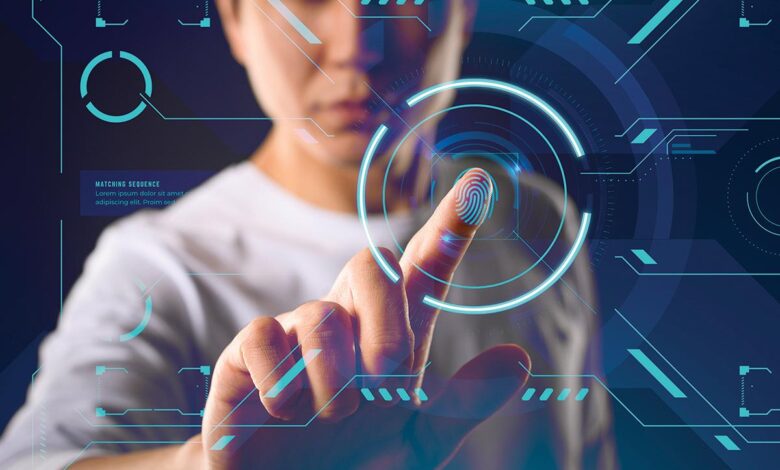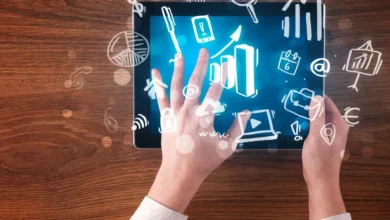9 Ways Technology is Changing the World In 2023

9 Ways Technology is Changing the World In 2023? Technology is advancing at a rapid pace and is changing the world in more ways than one. The way we live, work, and interact with each other is being transformed by technology.
1. Advancements in Artificial Intelligence (AI)
Artificial Intelligence (AI) has been in the spotlight for the past few years, and it is expected to make even more significant strides in 2023. AI is being used in various industries, including healthcare, finance, and transportation. AI-powered chatbots are now common in customer service, and AI is also being used to develop self-driving cars. In healthcare, AI is being used to analyze patient data to develop personalized treatment plans.
2. Augmented Reality (AR) and Virtual Reality (VR)
AR and VR are no longer just buzzwords; they are becoming more mainstream and are changing the way we experience the world. In the gaming industry, VR is used to provide an immersive experience. In retail, AR is being used to allow customers to try on clothes virtually. In education, VR is being used to create virtual field trips, providing students with a unique learning experience.
3. 5G Networks
5G networks represent the fifth generation of mobile networks, offering faster download and upload speeds, lower latency, and higher network capacity. With 5G, users can expect to download entire movies in seconds, experience virtual and augmented reality with minimal lag, and connect a greater number of devices to the network without sacrificing performance. However, 5G networks require significant infrastructure upgrades and deployment, including more cell towers and advanced equipment, which can be costly and time-consuming. Despite these challenges, 5G networks are expected to have a significant impact on various industries, including healthcare, transportation, and entertainment, enabling new possibilities for innovation and connectivity.
4. Internet of Things (IoT)
The Internet of Things (IoT) is the concept of connecting everyday devices to the internet to provide data that can be analyzed to improve efficiency and performance. IoT is being used in various industries, including manufacturing, agriculture, and healthcare. In manufacturing, IoT is being used to track the progress of products in real-time, providing better quality control.
5. Autonomous Vehicles
Self-driving cars are no longer just a concept; they are becoming a reality. Companies like Tesla, Google, and Uber are investing heavily in autonomous vehicle technology. Self-driving cars are expected to improve road safety and reduce the number of accidents caused by human error.
6. Blockchain Technology
Blockchain technology is most commonly associated with cryptocurrency, but it has much broader applications. Blockchain technology provides a decentralized and secure way to store data, and it is being used in various industries, including finance and healthcare. In finance, blockchain technology is being used to improve transparency and reduce fraud.
Read More: Top 10 Best Internal Hard Drives In 2023
7. Renewable Energy
Renewable energy sources like solar and wind power are becoming more affordable and accessible. In 2023, it is expected that renewable energy will make up a significant portion of the world’s energy mix. Renewable energy sources are not only environmentally friendly, but they are also becoming more cost-effective than traditional energy sources.
Renewable energy has become increasingly popular in recent years as a solution to climate change and the depletion of non-renewable resources.
Renewable energy refers to energy sources that are replenished naturally, such as solar, wind, hydro, geothermal, and biomass energy. Unlike non-renewable energy sources such as oil and coal, renewable energy sources are not finite, and do not contribute to the emission of harmful greenhouse gases.
Renewable energy systems work by harnessing the power of natural resources to generate electricity. The specific process varies depending on the type of renewable energy being used.
Solar energy systems use photovoltaic cells to convert sunlight into electricity. These cells are made from semiconducting materials such as silicon, and when sunlight hits them, electrons are freed from the atoms, creating a flow of electricity.
Wind turbines work by capturing the kinetic energy of the wind and using it to turn a turbine, which generates electricity. The faster the wind, the more electricity can be generated.
Hydro energy systems use the force of moving water to turn a turbine and generate electricity. This can be done through the use of dams or tidal power.
Geothermal energy systems use the heat from the Earth’s core to generate electricity. This is done by tapping into geothermal reservoirs and using the heat to turn a turbine.
Biomass energy systems use organic matter, such as wood or agricultural waste, to generate electricity. This is done by burning the biomass to create steam, which then turns a turbine.
Benefits and Drawbacks of Renewable Energy
Renewable energy has several benefits, including:
- Lower emissions: Renewable energy sources do not emit harmful greenhouse gases, unlike non-renewable sources such as coal and oil.
- Lower operating costs: Once installed, renewable energy systems can be less expensive to operate than non-renewable systems.
- Energy security: Renewable energy sources are not subject to supply constraints, unlike non-renewable sources.
However, there are also some drawbacks to renewable energy, including:
- Intermittency: Some renewable energy sources, such as solar and wind, are dependent on weather conditions, which can lead to fluctuations in energy output.
- Upfront costs: The initial cost of installing renewable energy systems can be higher than non-renewable systems.
- Land use: Renewable energy systems can require significant land use, particularly in the case of wind and solar energy systems.
Renewable energy is expected to play an increasingly important role in the future of energy production. The development of new technologies, such as energy storage systems, is helping to address some of the drawbacks of renewable energy, such as intermittency. Additionally, governments around the world are implementing policies and incentives to encourage the use of renewable energy.
8. Personalized Medicine
Personalized medicine is a new approach to healthcare that uses a patient’s unique genetic makeup to develop personalized treatment plans. In 2023, personalized medicine is expected to become more mainstream, and it has the potential to revolutionize the healthcare industry.
9. E-commerce
E-commerce has been around for a while, but it is continuously evolving. In 2023, it is expected that e-commerce will become even more personalized, with online retailers using AI and machine learning to provide customized recommendations to customers. E-commerce is also expected to become more social, with the rise of social commerce.
E-commerce can trace its roots back to the 1960s, when businesses began using electronic data interchange (EDI) to transfer business documents such as purchase orders and invoices. In the 1980s, the first electronic shopping systems were developed, paving the way for the modern e-commerce platforms we use today. The introduction of the World Wide Web in the 1990s further fueled the growth of e-commerce, leading to the emergence of online marketplaces such as Amazon and eBay.
E-commerce platforms enable businesses and individuals to sell their products and services online. The process typically involves the following steps:
- Setting up an online store or marketplace.
- Listing products or services for sale.
- Receiving orders and payment through the online platform.
- Fulfilling orders by shipping products or delivering services.
- Handling customer service inquiries and returns.
Benefits of E-commerce
E-commerce offers several benefits over traditional brick-and-mortar retail, including:
- Convenience: Customers can shop from anywhere, at any time, without having to physically visit a store.
- Lower costs: E-commerce platforms can be less expensive to operate than physical retail locations, with lower overhead costs and no need to pay for expensive storefronts.
- Increased reach: E-commerce enables businesses to reach customers beyond their local area, opening up new markets and opportunities for growth.
Drawbacks of E-commerce
Despite its many benefits, e-commerce also has some drawbacks, including:
- Security concerns: E-commerce platforms can be vulnerable to hacking and fraud, putting both businesses and customers at risk.
- Lack of personal interaction: E-commerce transactions lack the personal touch of in-person interactions, which can make it harder for businesses to build customer loyalty.
- Shipping issues: Shipping can be a major challenge for e-commerce businesses, with the potential for delays, lost packages, and damaged goods.
E-commerce is expected to continue its rapid growth in the coming years, with more businesses and consumers turning to online shopping. Technological advances such as virtual reality and artificial intelligence are likely to transform the e-commerce experience, making it more immersive and personalized.
Conclusion
The advancements in technology are changing the world in countless ways, and 2023 promises to be an exciting year in terms of technological developments. From AI and AR to renewable energy and personalized medicine, technology is shaping the world we live in.
While technology has its advantages, it is important to remember that there are also potential drawbacks. It is essential to consider the ethical implications of technology and ensure that it is used in a way that benefits society as a whole.
FAQs
What is the impact of 5G networks on IoT?
The adoption of 5G networks will enable more devices to be connected, allowing for more IoT devices and improving communication for autonomous vehicles.
How is blockchain technology being used in finance?
Blockchain technology is being used in finance to improve transparency and reduce fraud.
What is personalized medicine?
Personalized medicine is a new approach to healthcare that uses a patient’s unique genetic makeup to develop personalized treatment plans.
How is e-commerce expected to evolve in 2023?
E-commerce is expected to become even more personalized, with online retailers using AI and machine learning to provide customized recommendations to customers. It is also expected to become more social, with the rise of social commerce.
What are the potential drawbacks of technology?
While technology has its advantages, it is important to consider the ethical implications and ensure that it is used in a way that benefits society as a whole.












One Comment